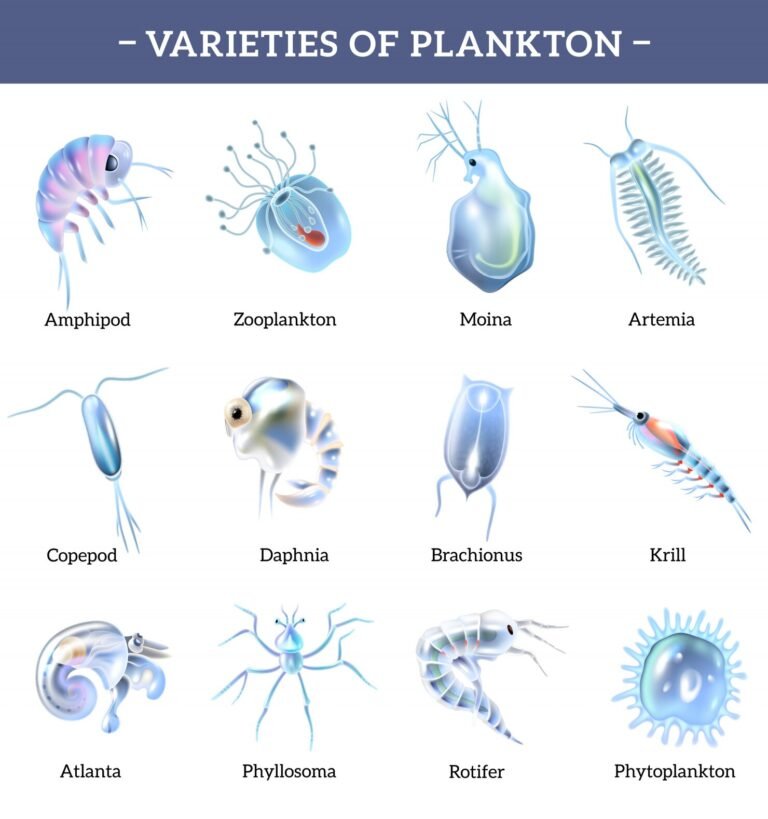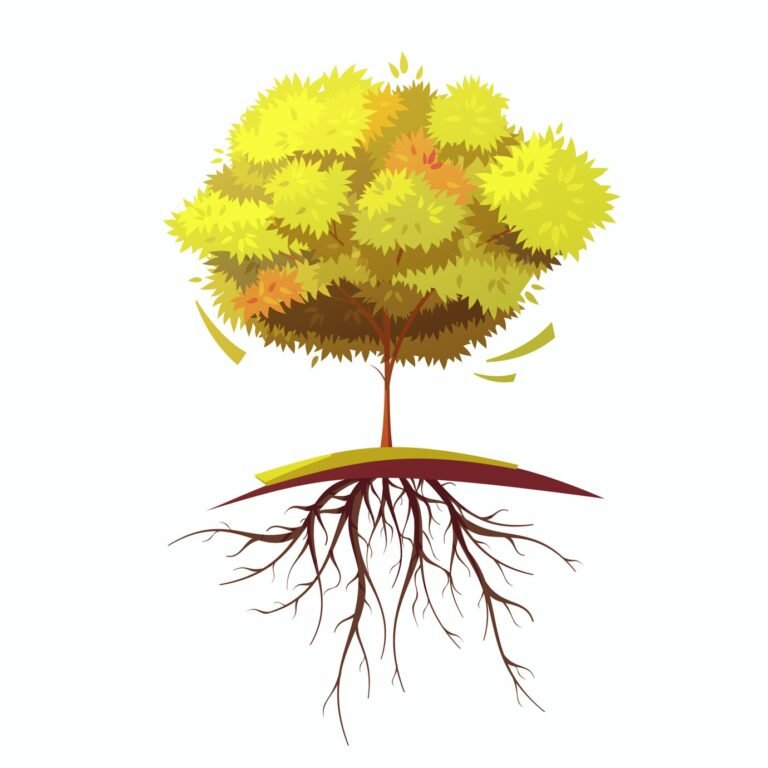Plants, just like us, go through different life stages. They start as tiny seeds, full of potential, and grow through phases of change, just as a child grows into an adult. Each stage—germination, seedling, vegetative growth, flowering, and fruiting—is crucial. If one stage goes wrong, the plant may struggle, just like a person lacking proper nutrition or care in childhood.
Understanding how plants grow isn’t just for scientists—it’s practical knowledge for anyone who wants a healthy garden, a productive farm, or even a thriving houseplant. Whether you’re a backyard gardener, a farmer looking to improve your yield, or simply someone curious about the natural world, knowing how plants develop can make a real difference.
In this guide, I’ll break down the growth stages in a simple, practical way, combining real-world farming experiences, scientific research, and expert advice. From the struggles of a small-scale farmer to discoveries from agricultural scientists, you’ll find useful insights that help you grow stronger, healthier plants. By the end, you’ll have a clear roadmap for nurturing plants at every stage. Let’s dive in and unlock the secrets of plant growth together!
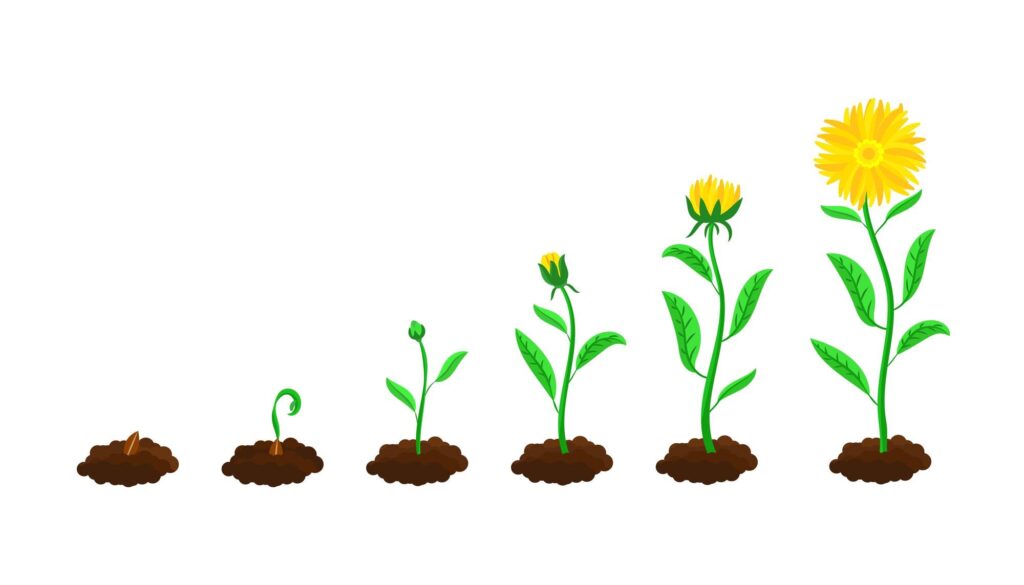
In This Article
- 1. Germination: The Beginning of Life
- 2. Seedling Stage: The Delicate Growth Phase
- 3. Vegetative Growth: The Rapid Expansion Phase
- 5. Fruiting and Seed Production: The Rewarding Phase
- Conclusion: Cultivating Success Through Knowledge
1. Germination: The Beginning of Life
Overview: Germination is the process where a seed awakens from dormancy, sprouting its first roots and shoots. It is the most fragile stage, influenced by water, temperature, and oxygen levels. Without the right balance of these factors, seeds may fail to sprout, delaying growth or leading to failure altogether.
Scientific Insights: Seeds need moisture, oxygen, and warmth to kickstart their growth. Water softens the seed coat, allowing the embryo inside to expand. Oxygen fuels cellular activity, while warmth speeds up metabolic processes.
Temperature plays a crucial role. Research indicates that different seeds have specific temperature preferences. Corn, for example, germinates best at 18–24°C (64–75°F), while lettuce thrives in cooler temperatures around 10–20°C (50–68°F). If conditions are too cold, germination slows or stops. If too hot, the seed might dry out or die.
Real-World Story: In Northern Nigeria, maize farmers often face challenges due to erratic rainfall, which can hinder seed germination and reduce yields. To address this, many farmers have adopted climate-smart agricultural practices, including mulching and the use of drought-tolerant maize varieties. Mulching, which involves covering the soil with organic material, helps retain moisture and regulate soil temperature, creating a more favourable environment for seed germination. Additionally, drought-tolerant maize varieties have been developed to withstand water stress, leading to improved yields. Studies have shown that the adoption of these drought-tolerant varieties can increase yields by 15% and reduce the probability of crop failure by 30%
By implementing these practices, farmers in Northern Nigeria have improved their maize production, leading to better harvests and enhanced food security.
Actionable Tip: For home gardening, try the paper towel germination method. Place seeds between damp paper towels, seal them in a plastic bag and store them in a warm place. After a few days, check for sprouts. This method helps determine which seeds are viable before planting, saving time and effort.
By understanding germination and applying the right techniques, anyone can improve their success in growing healthy plants, whether on a farm or in a backyard garden.
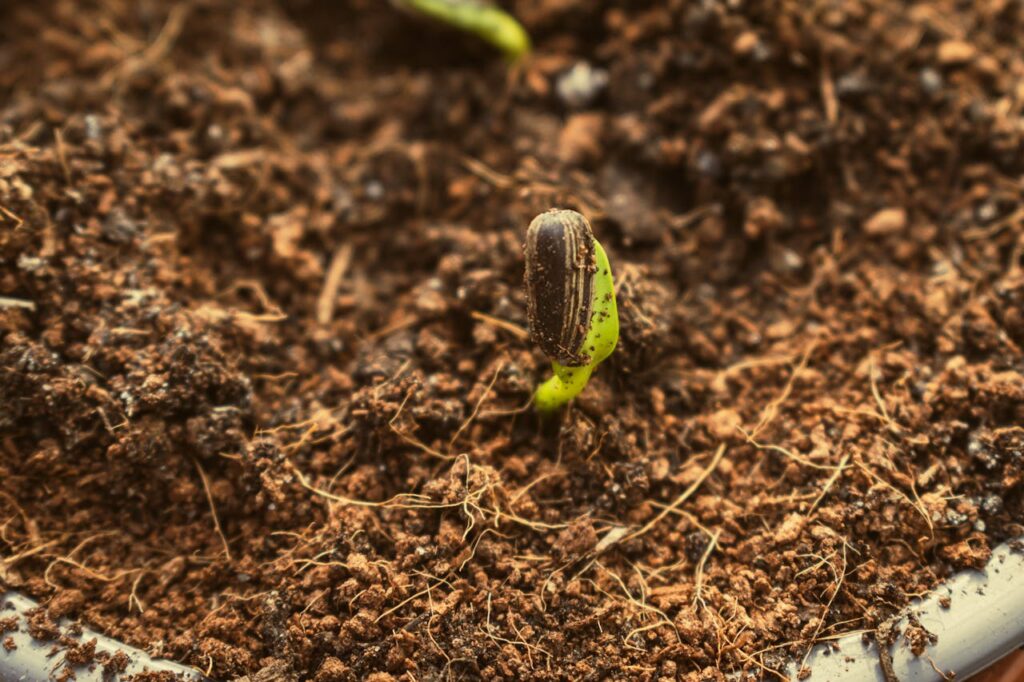
2. Seedling Stage: The Delicate Growth Phase
Overview: Once a seed has sprouted, it enters the seedling stage, a time of delicate, rapid growth. The first true leaves emerge, and this is when the plant starts to develop its ability to photosynthesise and sustain itself. This stage is like a newborn baby’s first weeks—fragile, full of potential, and needing the right balance of care. Light, water, and nutrients play a vital role in determining whether the seedling grows into a strong, healthy plant or struggles to survive.
Scientific Insights:
- Light: Adequate light is essential during the seedling stage. Studies have shown that light intensity significantly influences seedling quality. For instance, increasing light intensity has been associated with improved stem calliper, root dry mass, and shoot dry mass, leading to sturdier seedlings better equipped to withstand transplantation and environmental stresses. Additionally, the light spectrum plays a vital role; blue light has been found to enhance chlorophyll production, resulting in healthier foliage, while red and far-red light promote growth and flowering. (extension.okstate.edu)
- Watering: Maintaining appropriate moisture levels is critical. Overwatering can lead to damping-off, a fungal disease that can rapidly kill seedlings, while underwatering can cause dehydration and stunted growth. Research indicates that adequate moisture, achieved by watering every 1-3 days, is optimal for nursery establishment of certain species, such as Albizia lebbeck seedlings.
Expert Perspective: Dr. Eduardo Zeiger, Professor Emeritus at the University of California, Santa Cruz, emphasizes the importance of light in plant development: “Sunlight serves as a signal that regulates various developmental processes, from seed germination to fruit development.”
Real-World Example: A study by the USDA Forest Service investigated the response of tree seedlings to different LED light spectra. The findings revealed that spectra with a greater complement of blue light yielded more growth, particularly in root development, highlighting the significance of light quality in seedling cultivation.
Actionable Tip: If growing indoors, place seedlings near a bright south-facing window or use full-spectrum LED grow lights for at least 14 hours daily. A simple test: If your seedlings are stretching toward the light and looking spindly, they need more exposure. Keep the light source close—just a few inches above the plants—to encourage sturdy growth.
By understanding the seedling stage and giving plants what they need, you set the foundation for healthy, thriving growth in the weeks to come.
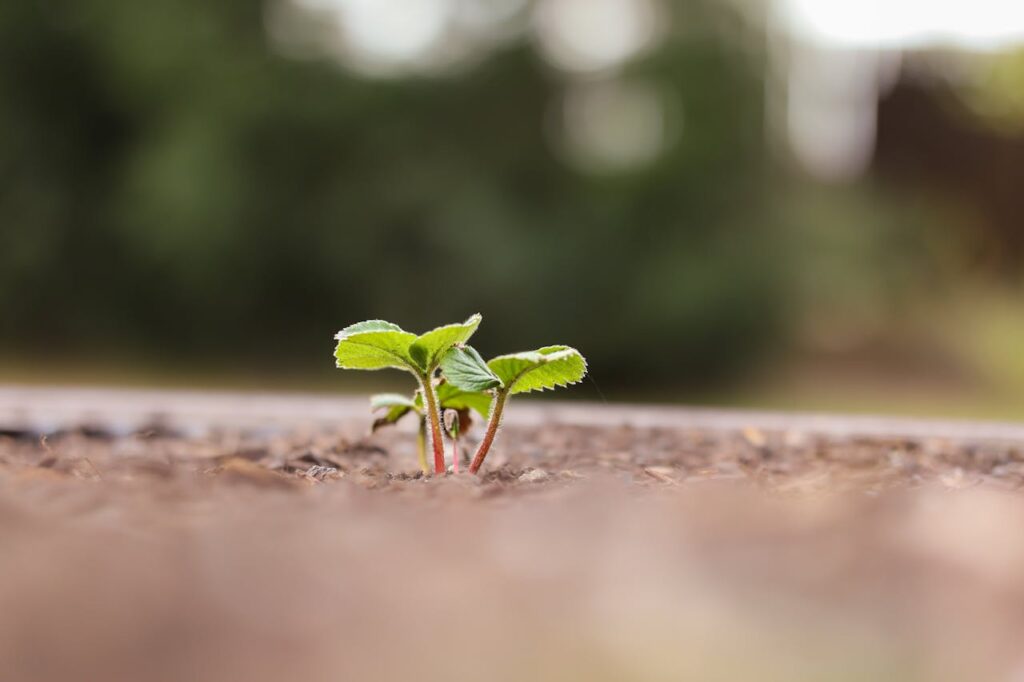
Learn More: How to Plant and Grow Garlic
3. Vegetative Growth: The Rapid Expansion Phase
Overview: This is the stage where plants focus on growing strong, both above and below the ground. Leaves stretch out to soak up as much sunlight as possible, and roots push deeper into the soil to anchor the plant and absorb water and nutrients. This is a make-or-break time, and giving plants the right care now sets the stage for healthy blooms or a big harvest later.
Scientific Insights: Plants are especially hungry for nitrogen (N) during this phase. Nitrogen fuels leaf and stem growth, making plants lush and full. Research indicates that adequate nitrogen application enhances root proliferation under drought conditions, leading to adaptive changes in root and xylem that improve drought tolerance and growth performance in plants.
Why This Matters: Think of it like building a house—you wouldn’t want to skimp on the foundation, right? The same goes for plants. A strong start means a more resilient, productive plant in the long run.
Real-World Example: A tomato farmer decided to test two fertilisation methods: one field was treated with synthetic fertilisers, while the other relied on compost-enriched soil. The results? The plants grown in organic-rich soil developed 30% larger root systems and produced 20% higher yields. The deeper roots allowed better access to water and nutrients naturally, making them stronger and more productive.
This aligns with broader research findings. A comprehensive review of 107 studies found that organic fertilisers can increase tomato yields by an average of 42.18%. In the farmer’s case, the compost-enriched plants followed this trend, demonstrating significantly larger root systems and improved yields. By fostering deeper root growth, organic soil amendments enhanced the plants’ resilience, making them better equipped to access nutrients and withstand environmental stressors.
Actionable Tip: Want to boost your plants during this critical phase? Try using compost tea once a week. It’s an easy, natural way to add essential nutrients that encourage strong vegetative growth. Simply steep the finished compost in water for 24-48 hours, strain, and use it to water your plants. This gives them an extra dose of nutrients that they can absorb quickly, helping them thrive.
Giving plants the right support now means healthier, more resilient plants later—whether you’re growing flowers, vegetables, or trees.
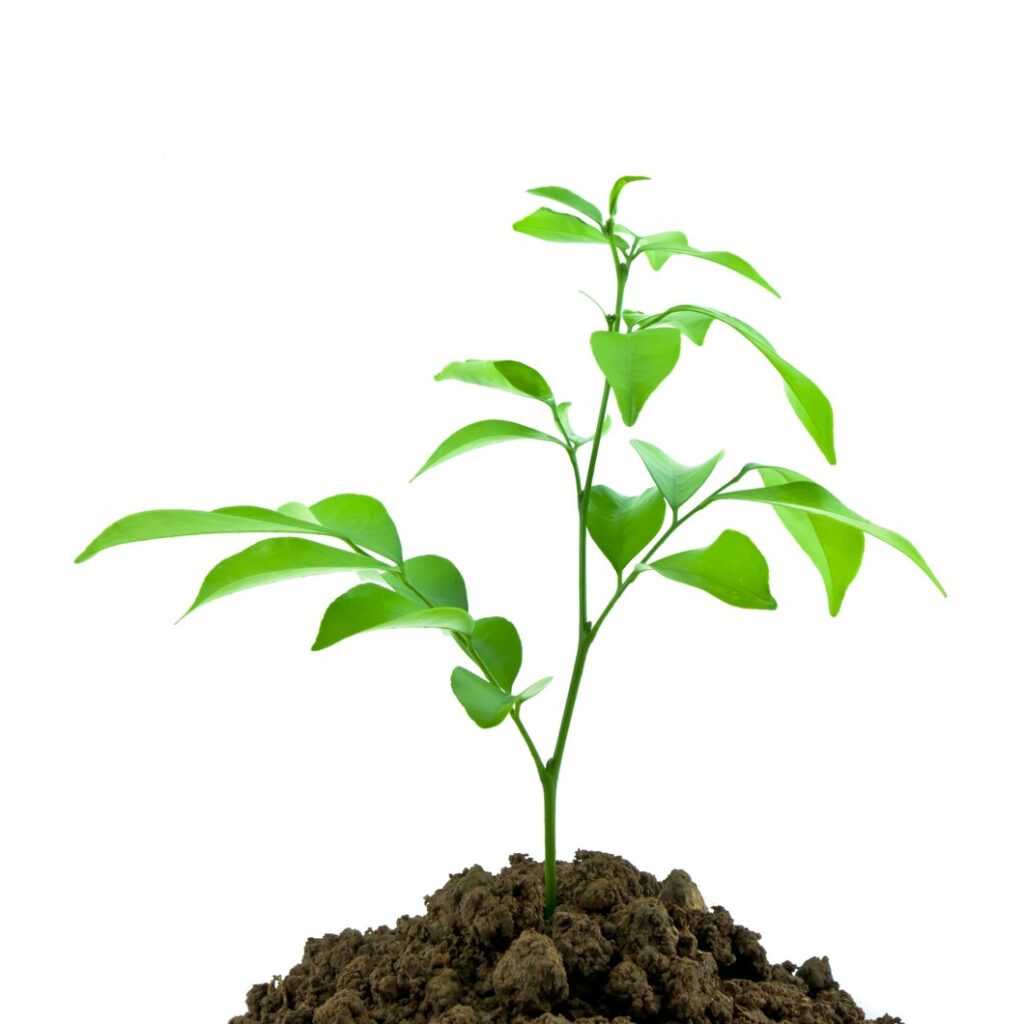
4. Budding and Flowering: Preparing for Reproduction
Overview: This stage marks a major shift in a plant’s life, from growing leaves to producing flowers, which will eventually lead to fruits or seeds. It’s a crucial moment, much like adolescence in humans, when the plant starts gearing up for reproduction.
Scientific Insights: Flowering in plants is not a random process; it is regulated by photoperiodism, the physiological response to the length of day and night. This mechanism ensures that plants flower under optimal environmental conditions. For example, lettuce (Lactuca sativa) and radishes (Raphanus sativus) are long-day plants that initiate flowering when nights are short. In contrast, poinsettias (Euphorbia pulcherrima) and chrysanthemums (Chrysanthemum spp.) are short-day plants, requiring longer nights to trigger flowering (Wikipedia, “Photoperiodism”).
Nutrient availability, particularly phosphorus (P), plays a crucial role in flower formation. Phosphorus is essential for energy transfer, photosynthesis, and nutrient movement within the plant. A phosphorus deficiency can result in delayed flowering and poor reproductive development. Additionally, arbuscular mycorrhizal (AM) fungi enhance phosphorus uptake by colonising plant roots and extending their hyphae into the soil, improving nutrient absorption and supporting healthy flower production (Wikipedia, “Arbuscular Mycorrhiza”).
Expert Insight: “Flowering is a precisely regulated process controlled by both hormonal signals and environmental factors such as light and temperature. The discovery of florigen and the role of vernalization highlight how plants integrate these cues to ensure optimal reproductive timing.” — Dr. Liz Dennis, Plant Scientist.
Practical Tip: Want to give your plants the best chance to flower? Try feeding them a phosphorus-rich fertiliser, like bone meal or fish emulsion. This will support strong blooms and better fruit or seed production.
By understanding and supporting this stage, you’re not just helping a plant bloom—you’re ensuring a successful harvest or a beautiful display of flowers.

5. Fruiting and Seed Production: The Rewarding Phase
Overview: Once pollination occurs, plants shift their focus to fruit and seed development, a crucial stage for reproduction and agricultural yield. This phase demands optimal nutrients, water, and environmental conditions to ensure high-quality fruit formation. If plants lack proper support, fruits may become undersized, misshapen, or even fail to develop entirely.
Scientific Insights:
- Potassium (K): This essential nutrient plays a significant role in fruit development, influencing size, sweetness, and overall quality. Potassium regulates critical physiological processes, including photosynthesis, enzyme activation, and water balance. A potassium deficiency can lead to reduced fruit size, poor flavour, and shorter shelf life.
- Calcium (Ca): Adequate calcium levels are vital for maintaining cell wall integrity and membrane stability in fruits. Calcium deficiency is a major factor in disorders like blossom-end rot, especially in tomatoes and peppers. This condition causes dark, sunken spots at the blossom end of the fruit, leading to significant crop losses. Calcium uptake can be hindered by factors such as drought stress or excessive nitrogen fertilisation, making proper soil management essential (Wikipedia, Calcium Deficiency in Plants).
Real-World Story: A watermelon farmer in Florida was struggling with inconsistent fruit sizes. Some were large and healthy, while others were small and underdeveloped. After researching natural ways to improve fruiting, the farmer decided to try seaweed extract. The results were impressive. The seaweed provided essential micronutrients, and over time, the farm saw a 15% increase in fruit weight. The watermelons were not only bigger but also juicier and more flavorful. This simple adjustment made a huge difference in both yield and quality.
Actionable Tip: If you want bigger, juicier fruits, consider adding banana peel compost to your soil. Banana peels are a rich, natural source of potassium, and as they break down, they release nutrients that help fruits grow stronger and tastier. Simply chop up the peels and bury them near the base of your plants for an easy, organic boost.

Learn More: Do Pineapples Grow on Trees?
Conclusion: Cultivating Success Through Knowledge
Understanding the stages of plant growth allows growers to make informed decisions that enhance yield and quality. Whether you’re a farmer aiming for a commercial harvest or a home gardener growing vegetables, applying these insights can transform your results.
Final Takeaways:
| Growth Stage | Key Nutrients | Common Challenges | Solutions |
|---|---|---|---|
| Germination | Moisture, Oxygen | Poor seed viability | Pre-soak seeds, use starter trays |
| Seedling | Light, Nitrogen | Damping-off disease | Proper drainage, air circulation |
| Vegetative Growth | Nitrogen | Stunted growth | Compost, balanced fertilizers |
| Flowering | Phosphorus | Bud drop | Maintain consistent watering |
| Fruiting | Potassium, Calcium | Poor fruit set | Hand pollination, micronutrient supplements |
By integrating research-backed techniques with real-world experience, we can all cultivate healthier, more productive plants.

